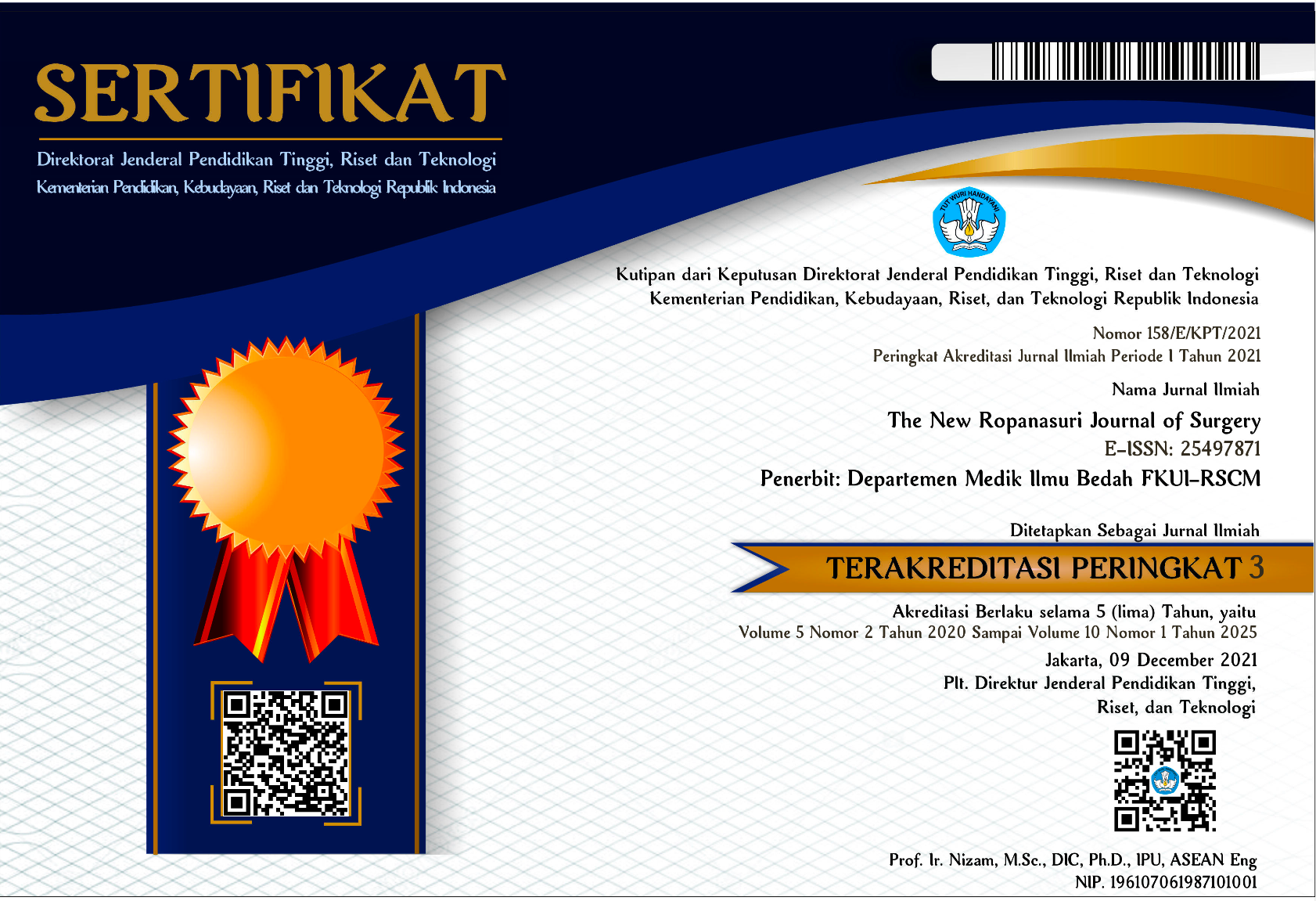Abstract
Introduction. Obesity becomes one of concern for surgeon asit provides additional morbidity in breast cancer. It influencesthe healing process negatively, and increase the complications following mastectomy. The most often found complication is seroma. Its incidence in obese is found higher than non–obese patient. Studies evaluating the correlation between obesity and seroma showed controversy. Hence, we run a study aimed to find out such a correlation in our characteristics. Method.We conducted cross sectional study. All patients treated with modified radical mastectomy (MRM) during period of 2013 to 2014 were included. Subject characteristics were recorded, including age, body mass index (BMI). Bilateral breast malignancy, diabetes mellitus and hypertension were excluded.Drain production and infection, and length of staywas recorded. Kolmogorov Smirnov test is used to find out normal distribution. In normal distribution, Pearson test or Spearman’s is used to find out correlation. Results. Out of 72 samples underwent MRM and drainage, there were 67 enrolled. The mean age was found of 48.5±8.5 years, and mean BMI of 25.43 kg/m2 ± 4.08.Length of stay ranged of 3–8 days andmean total seroma production was found of 502.3mL ± 207.8. We foundmoderate positive linear correlation between obesity and seroma (r = 0.581; p <0.01; r2 = 0.338) rolled of 33.8% and strong positive linear correlation between seroma and length of stay (r = 0.581; p <0.01;r2 = 0.542)rolled of 52.4%. Conclusion. We found positive linear correlation between seroma and obesity, and positive linear correlation between seroma and length of stay
Recommended Citation
Kurnia, Ahmad; Suhandi, Andri; and Budiningsih, Setyawati
(2016)
"Correlation between Obesity and Seroma Following Modified Radical Mastectomy,"
The New Ropanasuri Journal of Surgery: Vol. 1:
No.
1, Article 2.
DOI: 10.7454/nrjs.v1i1.2
Available at:
https://scholarhub.ui.ac.id/nrjs/vol1/iss1/2













